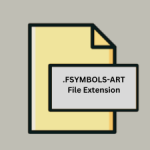.HEIF File Extension

High Efficiency Image Format
| Developer | Moving Picture Experts Group |
| Popularity | |
| Category | Raster Image Files |
| Format | .HEIF |
| Cross Platform | Update Soon |
What is an HEIF file?
HEIF, which stands for High Efficiency Image Format, is a modern image file format designed to provide efficient storage and delivery of images and image sequences.
It was developed by the Moving Picture Experts Group (MPEG) and is based on the ISO Base Media File Format (ISOBMFF). HEIF files can contain still images, image collections, image sequences, image metadata, and even audiovisual content.
More Information.
HEIF was first introduced in 2015 as a successor to the JPEG format, aiming to provide better compression while maintaining high image quality.
Its initial purpose was to address the limitations of existing formats in terms of compression efficiency, support for transparency, and flexibility in storing multiple images and metadata within a single file.
Origin Of This File.
The development of HEIF began with a focus on improving compression efficiency and flexibility compared to older formats like JPEG and GIF.
Initial work on the format was carried out by MPEG as part of its efforts to standardize a multimedia container format that could handle both high-quality images and image sequences efficiently.
File Structure Technical Specification.
HEIF files are structured using the ISOBMFF, which allows for the encapsulation of image data along with metadata in a single file.
This structure supports a variety of codecs for encoding image data, including HEVC (High Efficiency Video Coding) for image compression.
HEIF also supports advanced features such as transparency, image sequences (like animations or bursts), and the ability to store multiple images (or image variants) in a single file through the use of ‘items’ and ‘boxes’ within the ISOBMFF framework.
How to Convert the File?
Converting HEIF files to other formats like JPEG or PNG may be necessary for compatibility or editing purposes.
Several software tools and online converters support HEIF conversion. Common methods include using image editing software (like Adobe Photoshop or GIMP), dedicated HEIF conversion tools, or online conversion services.
Advantages And Disadvantages.
Advantages:
- Higher Compression Efficiency: HEIF typically achieves better compression compared to JPEG, resulting in smaller file sizes for the same image quality.
- Support for High-Quality Images: It supports not only standard resolution images but also high-quality images suitable for professional use.
- Flexibility: HEIF can store multiple images, thumbnails, and image variants (like different encodings or resolutions) in a single file, allowing for efficient storage and delivery of image collections.
- Advanced Features: It supports features like transparency (alpha channels), image sequences, and the embedding of auxiliary images and metadata.
Disadvantages:
- Compatibility: Older software and devices may not fully support HEIF, requiring conversion or updates to view or edit these files.
- Complexity: The format’s advanced features can make it more complex to implement and support in software applications compared to simpler formats like JPEG.
How to Open HEIF?
Open In Windows
- HEIF support is integrated into Windows 10 and later versions via the Windows Imaging Component (WIC). Alternatively, third-party software like VLC media player can also open HEIF files.
Open In Linux
Open In MAC
- MacOS High Sierra and later versions support HEIF natively. Preview and Photos apps can open HEIF files.
Open In Android
- Starting with Android 9 Pie, HEIF support is included. However, support can vary between devices and manufacturers.
Open In IOS
- HEIF is the default image format for photos taken with iPhones running iOS 11 and later. It is supported in the Photos app.













